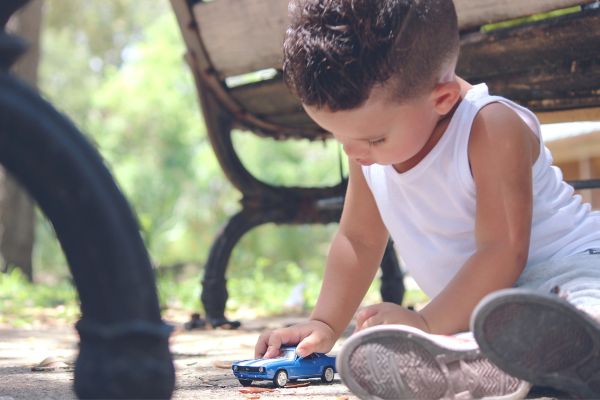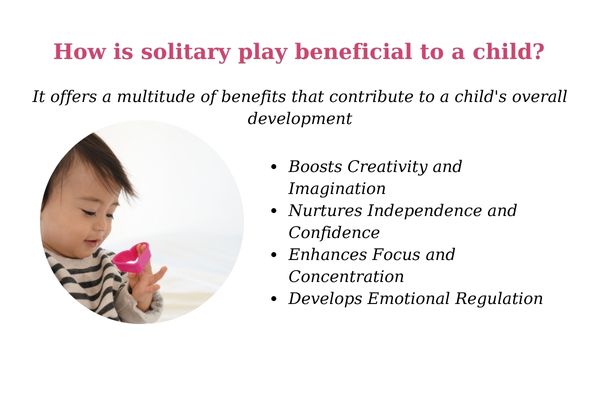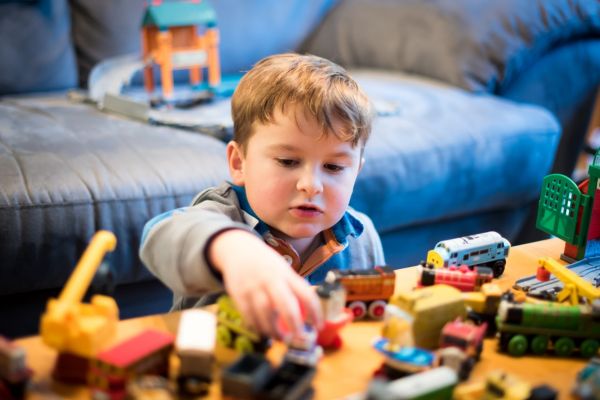The quiet hum of solitary play might seem like an anomaly in a world buzzing with social interaction. But within the depths of playing alone lies a universe of imagination, exploration, and self-discovery. Solitary play is a crucial stage in every child’s development, offering a unique canvas for fostering creativity, independence, and a sense of self.
What is solitary play?
Solitary play refers to the act of playing independently without the direct involvement of others. It’s not about isolation or loneliness; it’s about embracing the freedom and joy of self-directed exploration. This type of play can manifest in various forms, from the cooing infant grasping at colorful mobiles to the engrossed preschooler building elaborate block towers.
What age group is solitary play?

The beauty of solitary play lies in its adaptability throughout childhood. While its peak typically occurs between birth and two years, it holds significance even as children develop social skills and engage in collaborative play.
- Newborn to Two Years: Solitary play involves sensory exploration and elemental manipulation during this early phase. Babies discover their limbs, revel in the textures of objects, and experiment with cause-and-effect relationships. From batting at mobiles to stacking blocks, every action is a fascinating journey into the world around them.
- Two to Four Years: As toddlers gain motor skills and cognitive abilities, their solitary play becomes more intricate. They engage in imaginative play, assigning personalities to objects and embarking on fantastical adventures. Building elaborate structures with blocks, creating scenarios for stuffed animals, or losing themselves in the pages of a picture book are all hallmarks of this stage.
- Four to Six Years: Preschoolers refine their solitary play by incorporating newfound skills and knowledge. They might conduct scientific experiments with water and baking soda, build elaborate Lego creations following instructions, or lose themselves in drawing and painting. Their solo endeavors become more focused and purposeful, reflecting their growing understanding of the world.
How is solitary play beneficial to a child?
Solitary play is far from being just a way to pass the time. It offers a multitude of benefits that contribute to a child’s overall development:

- Boosts Creativity and Imagination: Unimpeded by external influences, children’s imaginations soar during solitary play. They weave fantastical narratives, invent unique characters, and build intricate worlds, fostering creativity and problem-solving skills.
- Nurtures Independence and Confidence: Playing alone allows children to make their own choices, experiment at their own pace, and master challenges independently. This sense of agency builds confidence and fosters a belief in their capabilities.
- Enhances Focus and Concentration: Solitary play requires sustained attention as children become engrossed in their chosen activity. This ability to focus translates into other areas of life, improving academic performance and overall attention span.
- Develops Emotional Regulation: Playing alone provides a safe space for children to process emotions, express frustrations, and practice self-soothing techniques. This reflective time allows them to develop healthy coping mechanisms and emotional resilience.
Games and Activities to Spark Solo Fun
While children naturally gravitate towards solitary play, providing enriching materials and environments can further ignite their imaginations. Here are some ideas to get you started:
- Sensory Bins: Fill a bin with various textures like rice, beans, pasta, or sand, and add scoops, cups, and spoons for endless tactile exploration.
- Art Supplies: Crayons, paints, brushes, construction paper, and playdough offer endless possibilities for creative expression.
- Building Materials: Blocks, Legos, and wooden planks encourage imaginative construction projects, fostering spatial reasoning and problem-solving skills.
- Dress-Up Clothes: Costumes and accessories spark creativity and role-playing, allowing children to step into different characters and explore various identities.
- Quiet Books: These fabric books with interactive elements like buttons, zippers, and textures provide engaging sensory experiences for young children.
Remember, the key is to provide a safe and stimulating environment where children feel free to explore and create at their own pace. Avoid hovering or directing their play, and let their imaginations take flight. Twin Beds for Kids: A Guide to Choosing the Perfect One.
Beyond the Solo Spotlight
While solitary play holds immense value, it’s important to remember that it’s just one piece of the puzzle. As children grow, they naturally gravitate towards social interaction and collaborative play. Encourage healthy balance by providing opportunities for solo and group play, allowing them to reap the benefits of both worlds.
Solitary play is not merely an act of playing alone; it’s a gateway to self-discovery, imagination, and a sense of wonder. By understanding its importance and nurturing its potential, we can empower children to become confident individuals with the skills to navigate life’s solo and social landscapes. Remember, the quiet hum of solitary play isn’t a melody of isolation but rather a harmonious counterpoint to the vibrant symphony of childhood development. Let us celebrate the magic of self-directed exploration and cherish the unique gifts it offers to every growing mind.





